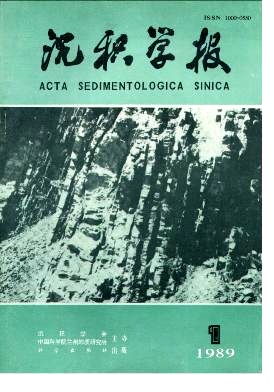SUBAQUEOUS TIDAL DELTA OF ZHUJIANG BASIN IN THE EARLY LOWER MIOCENE
- Received Date: 1986-11-20
- Publish Date: 1989-03-10
Abstract: Tidal action was extremely strong in semi-enclosed epeiric sea connecting with wide sea, the epeiric sea was named Tidal Sea.Near the narrow tidal passageway, there was a fine environment to create subaqueous tidal delta.Because zhujiangkou Basin was provided with above natural geographic condition during early deposition in the lower Miocene, a large suite of subaqueous tidal delta sand body was developed.It became one of the most important sedimentary face in that period. In Zhujiangkou Basin, the first widely transgression took place in the late of the South China Sea formed.The transgression passageway was a long and narrow area between the south of the basin and wide sea, the west boundary of "passageway" was formed by a NW trend boundary fundamental fault.The fault was a long growth fault with 140km, and was occurcd during the basin rifted in Eogene.Its south part was an o val igneous body (granitic intrusion in the Yanshan movement) and cut off the edge of the north convex oceanic crust.Because of the defence action of igneous body, the transgression had not taken place in Eogenc.Thc strong tcctogcncsis in the late Otigocenc ended sealed state of the basin before. As the whole of shelf area subsiding in the late of tectonic movement, the projecting igneous body gradually sank under water and the basin finaly integrated with wide sea. Analyseing the passageway of transgression the authors considered that it showed a funnclshapcd and the narrowest part is about 30 km and equate to that of igneous body. The strong tidal action altered normal sedimentary differentiation of the basin and sandstones were commonly developed during the period.The sandstone was charactered "divagated sand", the thickness was more than 65 percent of that of stratum in the south of the basin (inside of the strait) where was far from main source area, and was considered as developed area of subaqueous tidal delta. Tidal delta of Zhujiangkou Basin covered the superposed distribution area of about 10000 km2, the thickness was about several hundred meters. Single layer sandbody often occured with lens- shaped, the thickest part was about 60m. Here, and was called as tidal sandstone bar in this paper.In the cross section, the tidal delta consisted of multiserial reversed rhythmic sand which changed from fine to coarse upward by superposition. The sandstones were cleaner, lower argillaceous content, and middle to poorly sorted. It reflected the high energy environment and fast buried history when tidal flowed in or out basin. Nonsequence current bedding, veined bedding and cross- stratification were common stratification in tidal sand bar. Slump (mix) structure developed at top of sand bed, and indicated that the structure sometimes emerged water surface and formed littoral island land form in the late of tidal sand bar. The collapse in the edge was the reason of causing mixed and disorderly accumulation. The tidal delta sandstone was high mature degree, and was feldsparthic quartz sandstone without debris.Thc most steady heavy mineral content was twice to four times as much as that in source area. It showed that the sandstone was deposited after long distance moving, and further proved the inference that material source of the northern palaeo Zhujiang enriches nearby the tidal passageway by both moving of river and tidal race. Tidal race was also a kind of tractive current the same as river, but the tidal race was a estuarine flow which flow area was wide and flow rate altered regularly, that is, the rate decreased when flowed in the basin, and the rate increased when flowed out the basin. It caused obvious zonal phenomenon of different grained sands. The river was often limited in a narrow channel, its deposition characteristic was changeable flow rate and widely dispersed area of grained- degree.Therefore. grain-size structural paramerters of both appeared obviously difference. In the declination and standard deviation (σI - SKI ) divergent map of grain sample, the dots of sand of tidal sand bar were within a elliptic area, SK I value was 0.35-0.65. and showed very positive skew. σ I was 1.0-185.But SK I of Feilideman modern river and other fossil river sands were mainly -0.4-0.3 and showed positiveskew, approximately symmetry and negative skew, no very positive skew.In CM map. the sands of tidal sand barwere short of rolling and homogeneous suspended components which were common in the river sand.This was possibly concerned with lacking very coarse and very fine grain sand in the sample (mainly middle sand. lessfine-middle sand and coarse-middle).It was also short of rolling component is the curie of probability distribu-don.
| Citation: | Shi Guoping. SUBAQUEOUS TIDAL DELTA OF ZHUJIANG BASIN IN THE EARLY LOWER MIOCENE[J]. Acta Sedimentologica Sinica, 1989, 7(1): 135-142. |






 DownLoad:
DownLoad: